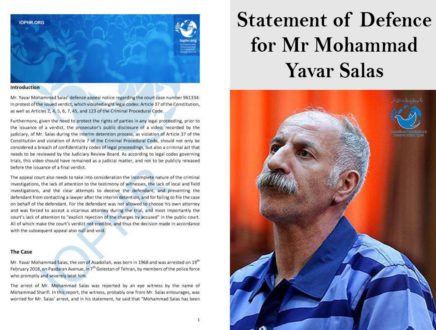IOPHR – Mr. Yavar Mohammad Salas’ defence appeal notice regarding the court case number 961334: In protest of the issued verdict, which violated eight legal codes: Article 37 of the Constitution, as well as Articles 2, 4, 5, 6, 7, 45, and 123 of the Criminal Procedural Code.
Introduction
Mr. Yavar Mohammad Salas’ defence appeal notice regarding the court case number 961334: In protest of the issued verdict, which violated eight legal codes: Article 37 of the Constitution, as well as Articles 2, 4, 5, 6, 7, 45, and 123 of the Criminal Procedural Code.
Furthermore, given the need to protect the rights of parties in any legal proceeding, prior to the issuance of a verdict, the prosecutor’s public disclosure of a video, recorded by the judiciary, of Mr. Salas during the interim detention process, as violation of Article 37 of the Constitution and violation of Article 7 of the Criminal Procedural Code, should not only be considered a breach of confidentiality codes of legal proceedings, but also a criminal act that needs to be reviewed by the Judiciary Review Board. As according to legal codes governing trials, this video should have remained as a judicial matter, and not to be publicly released before the issuance of a final verdict.
The appeal court also needs to take into consideration the incomplete nature of the criminal investigations, the lack of attention to the testimony of witnesses, the lack of local and field investigations, and the clear attempts to deceive the defendant, and preventing the defendant from contacting a lawyer after the interim detention, and for failing to file the case on behalf of the defendant. For the defendant was not allowed to choose his own attorney and was forced to accept a vicarious attorney during the trial, and most importantly the court’s lack of attention to “explicit rejection of the charges by accused” in the public court. All of which make the court’s verdict not credible, and thus the decision made in accordance with the subsequent appeal also null and void.
The Case
Mr. Yavar Mohammad Salas, the son of Asadollah, was born in 1968 and was arrested on 19th February 2018, on Pasdaran Avenue, in 7th Golestan of Tehran, by members of the police force who promptly and severely beat him.
The arrest of Mr. Mohammad Salas was reported by an eye witness by the name of Mohammad Sharifi. In this report, the witness, probably one from Mr. Salas entourages, was worried for Mr. Salas’ arrest, and in his statement, he said that “Mohammad Salas has been arrested by the Security Forces. Eye-witnesses say that he was severely beaten and taken away… His life is in danger, Mohammad Salas has been arrested.”[1] This indicates that the agents of the police force had brutally beaten him during his arrest. Around the same time, Mohammad Sharifi also posted a tweet [2] expressing his concerns regarding the forceful arrest of Mr Salas.
Then, on an unknown date and time, an interview [3] with Mr. Salas was conducted whilst he was lying on a hospital bed with his head heavily bandaged and his eyes closed and probably under influence of an uncertain drug, probably with a fever or in a delusional state, as he was unaware of the incident. This video clip of Mr Salas in the hospital, consists of multiple jumpshots and cutting and pasting of different sections together. In the clip, Mr. Salas says that “I became angry, and sat behind the wheel of the bus”. However, by looking at this video, it becomes clear that this video clip was highly edited and tampered with, and different sections were cut and pasted together in order to make it appear that Mr. Salas is giving a confession.
On February 19th 2018, a bus nicknamed the “crazy bus” in the 7th Golestan region of Tehran, caused an accident through unusual manoeuvres and subsequently running over few people on Pasdaran Avenue, in 7th Golestan of Tehran.
Shortly thereafter, Mr. Mohammad Salas was accused by the prosecutor’s office of driving the above mentioned bus, and with the incident case number 961334, which was then sent to the court and Mr Salas was charged with three murders.
Details of the Case
Part I –
From the detailed account given by Mr Salas, the following is determined –
a. Mr Salas was in the streets with other Dervishes and they were present in front of the police station. They were there protesting for the release of one of the imprisoned dervishes, an old man named Mr Riyahi, who was falsely accused of stealing a car.
b. Mr Salas, along with other Dervishes, then went to the police station in order to speak with the police officers, so as to inquire about the case of Mr Riyahi and negotiate with the police to release the detainee. However, they were only met with empty answers in return as the police were not answering their queries. They negotiated with the police to release Mr Riyahi, which led to some altercations as the situation escalated. The police officers then attacked these Dervishes with batons and injured them seriously.
Mr Salas broke his skull in several places and suffered serious injuries from the heavy beating, and was bleeding profusely which covered his entire face. This event left him feeling angry, and so he left the police station to go back to the street and get inside a bus parked there. The keys of the bus were inside it, so he turned on the
bus, at which point he became unconscious as a result of the severe injuries he had just suffered after the police attacked him (and other dervishes).
c. The police officers chased after Mr Salas, and upon seeing his critical condition with a broken skull and bruised body, they took him to the hospital. Inside the hospital, when Mr Salas regained consciousness, he was told that he ran over three people with a bus. He did not accept these allegations and outright denied them. The person interviewing Mr Salas asked him to give an account of what he remembers from the event. In response, Mr Salas tried to recall what happened as him and other Dervishes went to the police station to protest, but he kept stumbling on a few details as he was recalling the incident, due to his medical condition and severe injuries to the head. This means Mr Salas was being interviewed while he was not in the right state of mind, and he himself did not realise what he is saying.
d. Later on, the judge in the court asked Mr Salas as to why he went and sat behind the wheel of the bus. Mr Salas said that “they beat me with batons and broke my head, and I became upset and angry and ran away, and wanted to get away from the situation with the bus… But the police officers arrested me.”
Therefore, it is clear that:
1. Mr Salas was not arrested during the confrontation that happened in the evening of
19th February 2018, between the Dervishes and the Security & Basij Forces on Pasdaran Avenue. He was arrested when he went in front of the police station to negotiate with the police officers for the release of his friend.
2. When the police took Mr Salas to the hospital, he was severely beaten up and was bleeding profusely after the heavy injuries he sustained. For this reason, it was apparently rumoured that Mr Salas has been killed, as nobody thought that Mohammad Salas would remain alive. Later on, it was announced that he is alive and was falsely accused of being the driver of the bus that ran over three people.
3. The aforementioned chain of events occurred well before the conflict that took place in the evening on Pasdaran Avenue.
Part II –
During the conflict in the evening, according to the prosecutor, at 6:20 PM a bus attack took place and ran over three police officers. At this time that the prosecutor has stated, during which it was night time and dark outside, there are video recordings that show the following:
1. A witness to the incident is driving a car behind this white bus involved in the attack, and is recording the bus, and he says that this bus just ran over and killed three
people [4].
2. The same witness (from above) says that this bus was put under heavy gunfire, and the driver has been killed [5].
3. We have photographs [6] of the bus, which reveal that the front windscreen is broken with several bullet marks, as well as the side windows which have numerous bullet marks. Also, both sides of the body of the bus has evidence of heavy gunfire from numerous bullet marks.
4. We have another video [7] recorded from the roof-top of a building. This video has been recorded when it was dark outside, and it films this incident and the bus which ran over people. At 00:34 in the video, you can hear gunshots and see the bright flashing lights of these gunshots.
From these pieces of evidence, we can determine that at 6:20 PM, when it was dark, a bus was aimed at and shot at numerous times, while it was on the move. With these three video recordings, you can also ascertain that whoever was inside this bus, no matter where he was inside the bus, would definitely have been killed and could not have remained alive due to the sheer number of bullets that were shot at the bus.
Part III –
It is clear from the video recording [8] of Mr Salas from the hospital, and from the appearance at the court trial [9], that Mr Salas has no signs of any gunshot wounds at all. His physical injuries are consistent with the evidence and with his own statement – the injuries he sustained (broken skull and heavy bruising) were from the heavy police beating that he suffered at the police station (as explained above). It is also important to note that Mr Salas never said in his statement that he was attacked by any bullets. Therefore, these pieces of evidence show that Mr Salas could not have been the driver of the bus, and neither could he have been inside the bus, i.e. Not the driver, nor a passenger. Conclusively, it is clear that the bus was being driven by someone else.
At the scene of the incident, there was another casualty which was very different in nature from the three police officers. A Basiji named Mohammad Hossein Haddadian [10] was also killed at the scene, as a result of severe gunshots to the face and body. His injuries closely match the injuries that would have been suffered by the driver of the bus. There is a possibility that the driver of the bus could have been Mohammad Hossein Haddadian.
Part IV –
There is a photo[11] taken from a video[12] that recorded the incident from the inside of a house. This photo evidence shows the driver of the said bus to be a young man with black hair and a black beard. This photo has a lot of resemblance to Mohammad Hossein Haddadian, who as mentioned above, was a Basiji also present at the scene.
Contrarily, Mr Salas is an older bald man with some grey hair on the sides of his head. From this evidence we can conclude with certainty that the driver of the bus, which was involved in the attack and was heavily shot at, was definitely not Mr Salas.
Limitations of the Court and Prosecution –
There are videos and photos capturing all sides of the bus and all angles of the incident, which show the bus while it is on the move, and these pieces of evidence are owned by the Iranian Regime. As part of the Operations Team of carrying out such planned actions, the Iranian Regime always includes a camera crew to film and photograph all events during the operation in order to be used as evidence in the court. However, in order to sentence Mr Salas, the court did not present any accurate videos or photographs from the collision of the bus with pedestrians and subsequently injuring them. These recordings do exist, but have not been released.
From these limitations, we can conclude the following:
1. We have no evidence in hand that proves the bus collided with anyone.
2. We have no evidence to prove that the bus killed a number of police officers.
3. The only thing we have are various alleged accusations made against Mr Salas in the court, but they are impossible to prove and are completely unsubstantiated.
Reasons for the Court’s Inability to Prove the Crime –
1. The crime scene has not been reconstructed during the court trial, as per the criminal trial procedures.
2. The weapon of crime or accurate videos from the incident showcasing the weapon of crime, i.e. the bus, have not been produced by the court or the prosecution.
3. The people who have been brought into the court as witnesses – their testimonies are in contradiction with each other, and thus do not prove anything.
4. No fingerprint analysis was carried out on this bus that was involved in the incident. The fingerprints on the steering wheel of the bus have not been compared with the fingerprints of Mr Salas. Therefore, the court has not been able to prove that Mr Salas is guilty of any charges.
5. Most important of all, is that Mr Salas himself has not admitted to having an accident or killing anyone; in his statement he pleaded ‘Not Guilty’ to all charges levied against him. So we can conclude that Mr Salas has not been proven ‘guilty’ by the court.
In conclusion, the judge cannot reach to a certainty about the crime, and the court cannot prove beyond a reasonable doubt that Mr Salas is guilty. Therefore, the presiding judge cannot give the sentence for a murder with intent or murder without intent, and sentence Mr Salas to hanging or retaliation (‘Retaliation’ or ‘Ghesas’, is to execute the accused by the hands of the family of the victims, as opposed to a State execution).
Usage of Busses and Other Automobiles –
In the incident that occurred on Pasdaran Avenue, there are reasons at hand that suggest that plainclothes security or police officers intentionally used automobiles for attacking people present at the scene. There are reports of Basij Forces on motorcycles, who were sent to Pasdaran Avenue around 3:30 PM and established themselves there. These motorcyclist-Basijis were on the frontlines, and opposite to them were the Dervishes on the other side. Amongst the group of Dervishes, there were a number of plainclothes officers who had infiltrated the group of peaceful protestors, and were throwing rocks and bottles filled with Molotov liquid towards the Basijis and police officers, in order to provoke them to attack and create conflict.
Behind the motorcyclist-Basijis, there were the Anti-Riot Revolutionary Guards stationed, who had brought in backup forces from Karaj using Sepah buses. At 3:30 PM, these forces were ordered to attack the Dervishes. The motorcyclists charged towards the Dervishes. Each bike consisted of two people – One being the rider, and second was an officer armed with a chain, baton or gun. The motorcyclist-Basijis charged towards the Dervishes, and the buses from behind the Basij Forces followed.
One of the Basijis, who was at the scene, gave the following eye-witness account [13]:
“Actually, we [Basijis] were charging towards them [Dervishes], and they retreated. Then we [Basijis] took two steps back. I looked behind me, and saw that a bus has hit me. I came to stand up, and I realized that I cannot. Next thing I see is that I am in the hospital.”
This incident occurred between 3:30 PM and 4:00 PM, and it was the beginning of the conflict. It looks to be more like an accident. It is also possible that the three police officers that were ran over by the bus and killed, could have been killed in this incident. However, this incident has nothing to do with Mr Salas, and the judge has not cited or mentioned this inside the court at all.
During the night, and in the confrontation which escalated, the Police and Sepah had trapped a number of Dervishes inside a house. From the video recordings [14] [15] [16] [17] [18] that have been published, it is very clear and certain that the Police and Sepah attacked the Dervishes with batons, knives, machettes and severely injured them. They were using extremely abusive language towards the Dervishes, and took away all their possessions. The Police and Sepah took away the car keys of some of the Dervishes, and then using a Samand and a Pride car, which were owned by these Dervishes, the police officers then drove into the crowd. Their goal was to give the false impression that the Dervishes premeditated this attack to use busses and cars to run over and kill people and police forces.
The Police and Sepah were orchestrating these attacks with the aim to create a conspiracy against Dervishes, falsely equating them to terrorist organisations such as Daesh. The ultimate goal is to attack the school of Sufism, and to eventually eradicate it from Iran. The Police and Security Forces, controlled and led by the Iranian Regime, want to make false claims that Dervishes have been brainwashed, and that at any moment, they could potentially do dangerous things and kill people. Their propaganda is to paint a negative image for the
Dervish community and for Sufism.
This is the case in its most accurate form, based on all the pieces of evidence and reports gathered. It is interesting to note that although the video clips of the bus accident, and evidences from the incident, are within the hands of the Iranian Regime, the judge continues to say that the Court and authorities supposedly have more accurate videos/photos, but it would not be appropriate to present it in the courts due to its sensitive content. If the Court and the official authorities actually had concrete evidence, they would have presented it in the trial by now. What this confirms is that the video recordings of the entire incident owned by the Iranian regime contains nothing at all that could prove Mr Salas as guilty. Perhaps the reason the Court or the authorities have not released these video evidences, is because they actually reveal how the Regime orchestrated this entire attack as a propaganda against Dervishes. The fact that they will not release these said videos, makes it very clear that they are trying to create a conspiracy against Dervishes, as part of their ploy to eradicate Sufism from Iran permanently.
Violations of Criminal Procedures in Mr Salas’ Case
1. Failure to assign a Weapon of Crime to Mr. Mohammad Salas’s case which is a violation of Article 45 of the Criminal Procedure Code.
Undoubtedly, the bus that was used to commit the criminal act of running over the people, in this case, can be considered as the instrument responsible for the crime. From the photos of the “crazy bus” in the press, it is safe to say that the “crazy bus” was an Iranian assembled Mercedes-Benz, or Iran Khodro, which apparently was used to transport the military and law enforcement forces between Tehran and Karaj.
Contrarily, the bus that Mr. Mohammad Salas drove, was actually a Scania bus [19] assembled in Iran, known in Iran as Shahab, and had its seats removed, for it was used as a sleeping area at nights by some of the Gonabadi Dervishes. This second bus can be identified by the distinct paintings of stars, trees and blossoms, all over its exterior body and windows. There is photo evidence of this bus that corroborates with Mr Salas’ statement and shows that this bus still exists, and that it is entirely different from the bus used in the attack.
Therefore, the indictment not only failed to connect the vehicle involved in the incident to Mr Salas, but also by officially declaring the number plate of the vehicle, the prosecutor has indirectly exonerated Mr. Mohammad Salas from the incident.
Therefore, the punishment imposed on the defendant is contrary to the provisions of paragraph (b) & (c) of Article 45 of the Criminal Procedure Code, which stipulates that if the instrument used in a crime or weapon (in this case the bus) cannot be attributed to the defendant “immediately after the crime, or through clear signs and obvious reasons, the accused cannot be found guilty of the crime.”
Not only was the weapon of crime not produced in the Court during the trial, but the prosecution also attempted to present illegitimate items [20] as the supposed “murder weapon”. The prosecution brought in a few knives, machettes and wooden sticks, to be filed as supposed evidence of what was used to commit the crime. These items have absolutely no relation to the bus attack in question, and have no relation to Mr Salas either.
2. Failure to attribute the bus to Mr Salas, through the lack of fingerprint sampling as stipulated in the Iranian Penal Code: which is itself a violation of Article 123 of the Criminal Procedure Code.
There is no objective scientific evidence from the prosecutor’s case that showed the slightest connection between the defendant and the “Crazy Bus”. The question arises that if the prosecutor was able to take pictures of the “Crazy Bus”, then would it not be appropriate for him to take actions in scope of his mandate, to fully investigate the crime scene, both forensically and scientifically, and try to prove the identity of the driver through fingerprinting the steering wheel, the bus keys and via other forms of forensic analysis in accordance with Regulations on the scope of powers and descriptions of duties and how to review the scene of crime, approved and communicated as of 2017.
Article 123 clearly states: “Whenever a local investigation or examination of a place is necessary to locate and clarify the subject, or if the accused or the plaintiff requests it, the investigation into scene of crime or examination shall be carried out”.
Also, attention can be drawn to the provisions of Articles 4, 6, 10 and 13 of the Regulations on the scope of powers, the description of duties, and the manner in which the scene of the crime be reviewed, approved and communicated as of 2017, which indicate that all the necessary formalities must be carried out to fully scrutinize the scene of a crime. And yet, the only results the prosecutor produced from his analysis, were the two photographs of the bus, while the sampling of the crime scene in general and the fingerprinting, in particular, are the most obvious and most basic stages of the discovery and are needed to prove the identity of the perpetrator, which were all clearly ignored.
In fact, it can be stated that the lack of pursuit for objective and credible samples from the scene of crime, such as fingerprints and forensic samples, has compromised the investigation process and has shifted the objectivity of the trial towards prejudice, which is perhaps the most obvious conclusion in regards to this case, as there has been deliberate criminal-procedural neglect committed by the prosecutor of this case.
3. Failure to take into account the evidences and witness statements of the shooting of the driver of the bus:
At 00:34 of the video clip (Evidences and References, No. [7]), it can be seen that the “Crazy Bus” is sprayed with bullets by the police and security forces. The shooting of the bus, by law enforcement agents in the aftermath of the tragedy caused by the “Crazy Bus”, is in accordance with the law enforcement duties of security forces. It is also apparent that it was this heavy gunfire that finally stopped the “Crazy Bus”. In the photos published (Evidences and References, No. [6]) from the “Crazy Bus”, bullet holes are clearly visible on all sides of the bus. Due to the fact that the “Crazy Bus” apparently intended to escape the scene, the firing of bullets by the law enforcement became the means by which the bus was finally stopped. There is video evidence (Evidences and References, No. [4],[5]) of a witness filming the bus after the incident and stating very clearly that “this is the bus that has run over three police officers and the driver has been shot with heavy gunfire”. Therefore, either the driver must have been shot dead, or at least badly injured and incapacitated, in order for the bus to come to a stop.
If Mr. Mohammad Salas was the driver of the above-mentioned bus, he should either have been killed or injured by gunshot wounds. However, from the pictures of Mr Salas after the incident and from his court appearance (Evidences and References, No. [8],[9]), there are no visible signs of any injuries resulting from gunshot wounds on the head or body of Mr. Salas.
It is surprising that this undeniable and unmistakable fact was totally ignored during the court case. Thus, it is hard to accept that such an omission during the hearing was inadvertent. Even if it is accepted that this omission was due to lack of attention, it is nevertheless an obvious indication that the indictment of Mr Salas was a mistake and it should no way be upheld, and the prosecutor’s case against Mr Salas is totally unjustifiable. Therefore, Mr. Salas could in no way have been the bus driver who committed this criminal offense.
4. Ignoring of Evidences: The Picture of Bus Driver Within the Video Evidence:
From careful examination of the video recording (Evidences and References, No. [12]) released of the incident, one can clearly see that the driver of the bus is a young man with dark hair (Evidences and References, No. [11]), while Mr. Mohammad Salas is a bald man with white hair on the sides of his head, and therefore he could in no way have been the driver of the “Crazy Bus”.
5. Lack of Explaining the Charges to the Accused: Violations of Articles 5 and 6 of the Criminal Procedure Code:
Article 5 of the Criminal Procedure Code states that: “The accused shall be informed as soon as possible of the subject matter and allegations of the alleged charges and has the right of legal representation and access to a lawyer and other rights of defence as specified in this law”.
However, Mr. Mohammad Salas’ remarks in the courtroom show that he was in no way aware of all the events or the charges being levied against him. Also, based on his remarks, he is under the impression that he is accused of driving a bus whilst halfconscious, which then resulted in a crash.
In addition, Mr Salas was deprived of the right to choose his own lawyer during the filing process, and preparation of the case, and even when a lawyer was finally appointed by the court, the attorney did not have the time needed to access to Mr. Salas’ case, which he publicly admitted to during the final court hearing. Furthermore, the argument of Mr Salas’ attorney concerning the irrelevance of retaliation in cases of pseudo-intentional or unintentional murders due to accidental nature of driving, clearly shows he did not have access to Mr Salas’ case files, as such argument is not legally relevant given the penal code and it also throws suspicion to the objectivity and legal competence of Mr Salas’ lawyer.
On this basis, one can be confident that Article 5 of the Criminal Procedure Code has been violated during Mr Salas’ case at least two times during his trial:
Firstly, due to the lack of timely awareness of the defendant in regards to the attribution of charges he is accused of.
Secondly, due to the lack of timely access of proper legal representation and the competence of the court appointed lawyer.
In addition, due to the lack of proper mechanism for Mr Salas in various stages of filing the case for his defence, as stated in Article 6 of the Criminal Procedure Code: “The accused, the victim, the witness and other concerned persons should be aware of their rights in the proceedings and have access to mechanisms, which ensures that these rights are respected.” Therefore, it is clear that these right have not been upheld in regards to the handling of Mr Salas’ case. All of which clearly shows that the Articles 5 and 6 of the Criminal Procedure Code have been violated in the handling of Mr Salas’ case.
6. General Indication : Violation of Article 4 of the Criminal Procedure Code:
As part of the Criminal Case against Mr Salas, his possession of a bus driving license, is mentioned as an adjudication of the accused, which is in clear contradiction with the provisions of Article 4 of the Criminal Procedure Code of 2013, which reads as follows: “The accused is innocent until proven otherwise.” Having a driving certificate does not result in the guilt of Mr Salas, since driving a bus legally requires a person to hold bus driving certificate. However, not having a valid certificate does not prevent a person from being considered as a culprit. Thus, a larger circle of suspects can exist, than just those who hold valid driving licences for a bus.
In addition, the prosecutor did not consider that other people on the street, whether ordinary people or law enforcement individuals, or anyone from the general public, could hold a valid certificate or expired licence for driving the bus. To obtain such assurance, the prosecutor would be required to make an official inquiry from the licence certification department of Iran. Then after the inquiry was received, all the persons concerned, either suspects or witnesses, should be summoned and interrogated. Thus, as such a step was definitely not taken, it is clear that prosecutor’s research is incomplete.
The legislator’s view is that the driver is required to drive with a valid certificate, in order to avoid harm. However, if someone deliberately attempts to drive recklessly or erratically (such as the driver of the “Crazy Bus”), he is not required to have a license. In this case, having or not having a driving license or certificate, cannot be a reason for the guilt or innocence of a person. Unfortunately, the prosecutor’s claim that the reason for Mr Salas’s guilt is his possession of a bus driving licence, without any further formal investigation, is without merit. Furthermore, his claim, in addition to undermining the principle of innocence, as set forth in Article 4 of the Criminal Procedure Code, is also in clear contradiction with the provisions of Article 2 of this law. “The criminal procedure must be documented in law, and guarantee the rights of the parties to the lawsuit, and its rules apply equally to those who are prosecuted in the same conditions for the same offenses.” Therefore, in light of the violations of Articles 2 and 4 of the Criminal Procedure Code, the prosecution’s claim of being guilty due to holding a valid driving licence, is legally inappropriate and violates the law, and thus the prosecutor’s claims against Mr Salas are unsubstantiated.
7. Failure to Observe the Defendant’s Rights: Violations of Article 37 of the Constitution, as well as Articles 4, 6 and 7 of the Criminal Procedure Code:
Adoption and protection of the rights of defence of the accused by judicial authorities is one of the most important principles of law. The protection of privacy and human dignity, is a fundamental right that must be respected until the moment the verdict is issued at the end of the trial.
The Article 37 of the Constitution states: “A person is innocent, unless his crime is established in the competent court, and the accused is never required to prove his innocence, his innocence is presumed unless the prosecutor proves in court otherwise. On this basis, the prosecutor must prove the elements of the crime and confirm that the elements of the crime in a competent court.” Therefore, until the final verdict has been reached and definitive vote has been issued, the accused should be considered to be a normal citizen with all his defence rights being upheld.
This point in Article 4 of the Criminal Procedure Code has been re-emphasized and detailed in the following terms: “The principle of innocence: in which any restrictive measure, the term of release and violations of the privacy of individuals, except in accordance with the law and in accordance with the Regulations, are not permitted and should be under the supervision of the judicial authority and, in any case, these measures should not be applied in such a way as to damage the self-respect and dignity of individuals.”
Unfortunately, in this case the prosecutor, who should himself be a model example of respect for the law, and respect for Article 37 of the Constitution and Article 4 of the Criminal Procedure Code, has resorted in this case to the use of an interview (Evidences and References, No. [3]) that points to forced confession under duress and has been submitted as “supposed confirmation” of guilt of Mr. Salas. This interview was carried out by the judicial authorities whilst Mr Salas was hospitalised with head injuries and probable concussion. In this regard, this interview was classified as a judicial matter, and as a rule, should not have been shown to anyone until at least the day of the trial, except to competent relevant authorities.
It should be noted that the recording and broadcasting of this interview was carried out when Mr Salas was placed under arrest, in a semi-conscious state, after being severely beaten by the police and hospitalised thereafter. In this regard anyone who has the slightest knowledge of the principles of jurisprudence, knows that detaining an individual is not the final verdict because there is no trial yet. It is just an assurance to have the accused in police custody. Therefore, publically declaring Mr. Salas as a “murderer” without any trial proceedings, and broadcasting his interview on national television, as opposed to it being a part of judicial proceedings, is completely in violation of the law.
In principle, the prosecutor’s action to record an interview and then repeatedly broadcast it on Iranian National Radio and Television, is a clear violation of Article 7 of the Criminal Procedure Code. As Article 7 states: “At all stages of criminal proceedings, observance of the citizenship rights stipulated in The law of respect for legitimate freedoms and the maintenance of citizenship rights, approved by the law of 4th May 2004, is obligatory for all judicial authorities, judicial officers and other persons involved in the proceedings. The offenders of these violations, in addition to the compensation for damages, are punishable under the provisions of Article 570. The Islamic Penal Code are condemned according to 22nd May 1996 laws, unless other laws with severer punishment is applicable. ”
As it stands, the prosecutor’s actions are a matter of a criminal offense as laid out by the provisions of Articles 4 and 7 of the Criminal Procedure Code. These articles provide Mr Salas (or his representation of lawyers) with the right to ask the court for enforcement of these Articles and hold the prosecution responsible, and demand the imposition of the penalties provided for in Article 570 of the Islamic Penal Code.
Conclusion:
As one can see, there are numerous instances of violations of the current laws of Iran in the indictments against Mr Salas, which undermines the court’s ruling and all the claims made against Mr Salas, as well as questioning the legal competence of the prosecution. The arguments stated above are more than sufficient to nullify this court trial of Mr Salas, and deem the current judgement as being void.
This case is an example of the failure of judiciary, and if the current Supreme Court ruling of a death sentence for Mr Salas is not thrown out, it will be a great injustice as an innocent man would have been forcefully executed at the hands of the Iranian Regime. The execution of Mr Yavar Mohammad Salas is a step towards a greater plot of prosecuting the spiritual leader of the Gonabadi Sufi Order, Dr. Noor Ali Tabandeh, and to further target and suppress all Gonabadi Dervishes, as part of the regime’s plan to eradicate Sufism from Iran.
It is hoped that judges who are experienced, diligent, specialised and impartial, will review the sentence against Mr Salas, and based on all these violations and lack of evidence, declare the ruling to be void and order a fair re-trial that upholds the appropriate criminal legal proceedings.
Evidences and References:
[1] https://youtu.be/MVqOWTqRAoU[2]

[4],[5] https://youtu.be/eArlT8rOy2A [6]
 [7] https://youtu.be/ymttP6EO6bo
[8]
[7] https://youtu.be/ymttP6EO6bo
[8]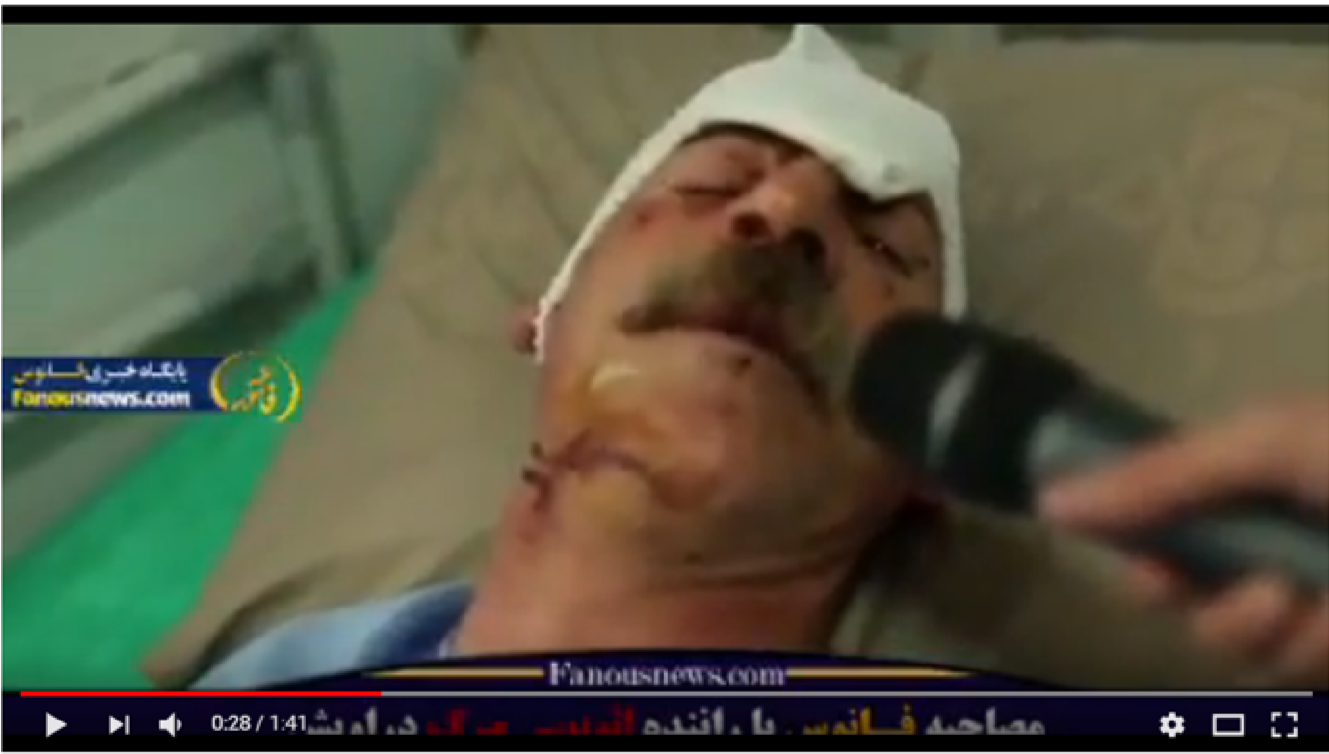 [9]
[9]
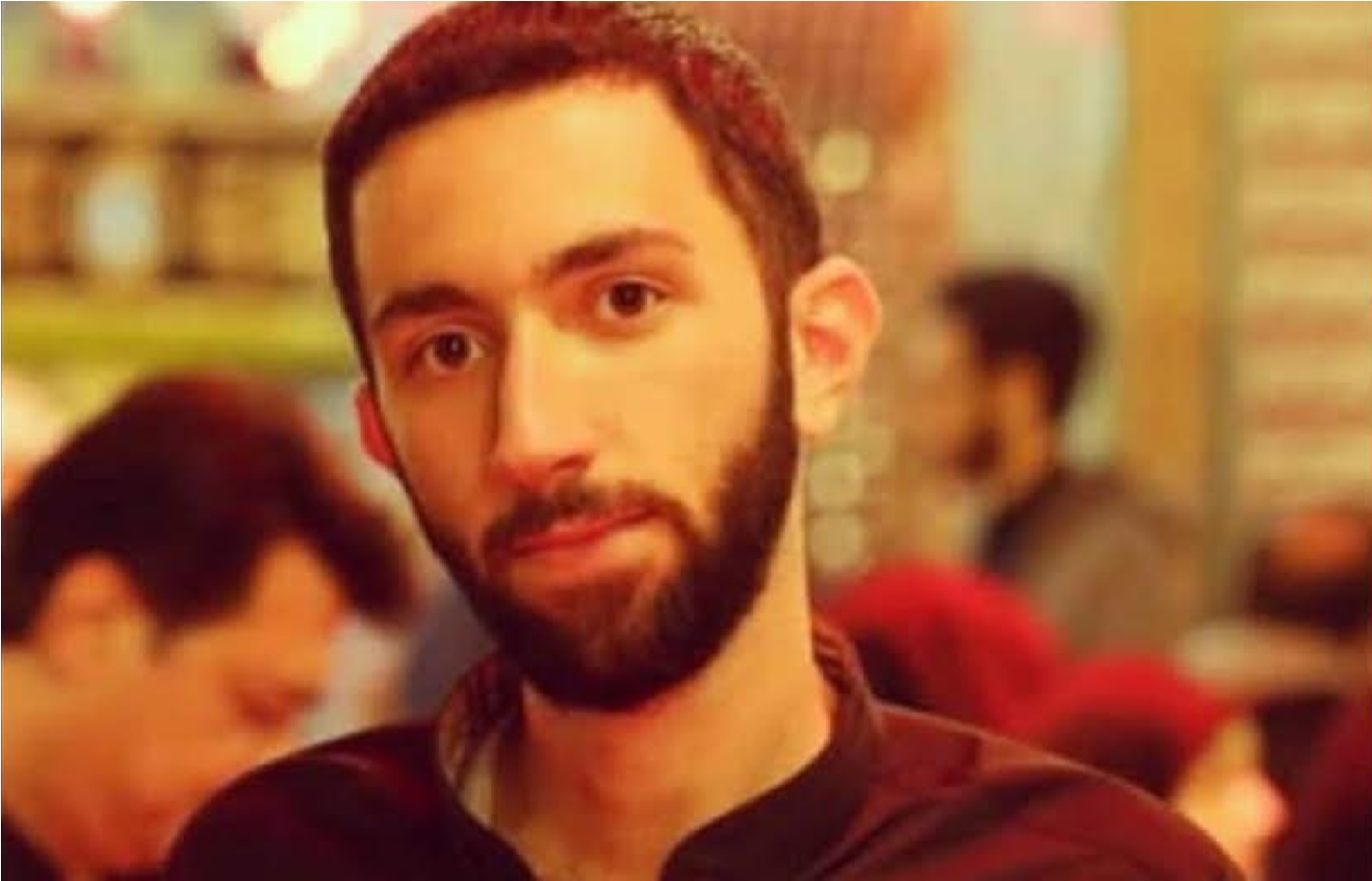


[12] https://youtu.be/NPji-rtgjzs [13] https://youtu.be/AnWVnCLbkGg [14] https://youtu.be/Mn7IXuyqFY0 [15] https://youtu.be/eRWDmHdyyVw [16] https://youtu.be/byvt49kVQk4 [17] https://youtu.be/SMaNK9hUnNo [18] https://youtu.be/t5QZSxi-ml4 [19]
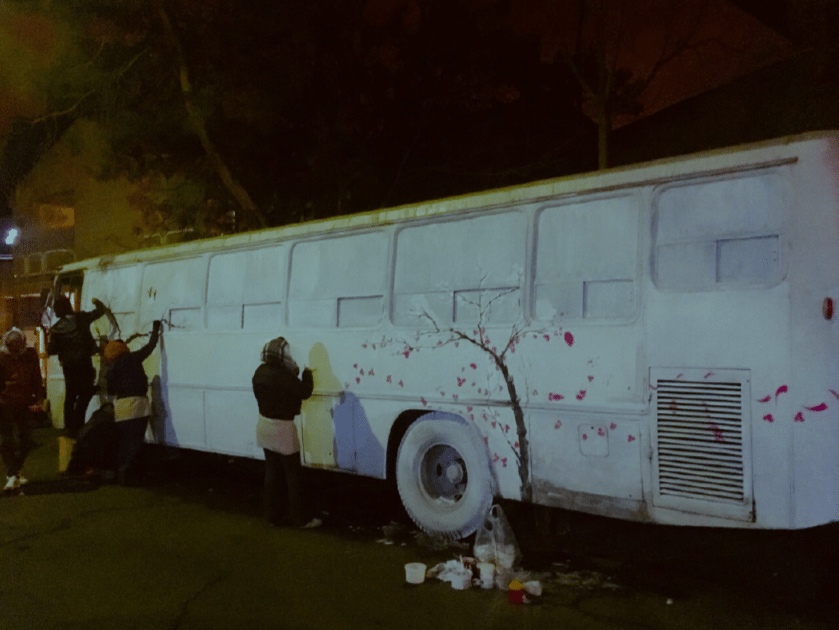
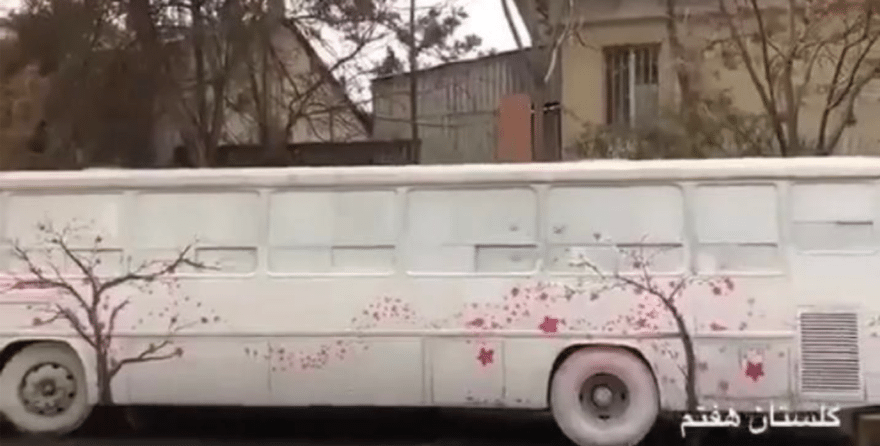
[20]
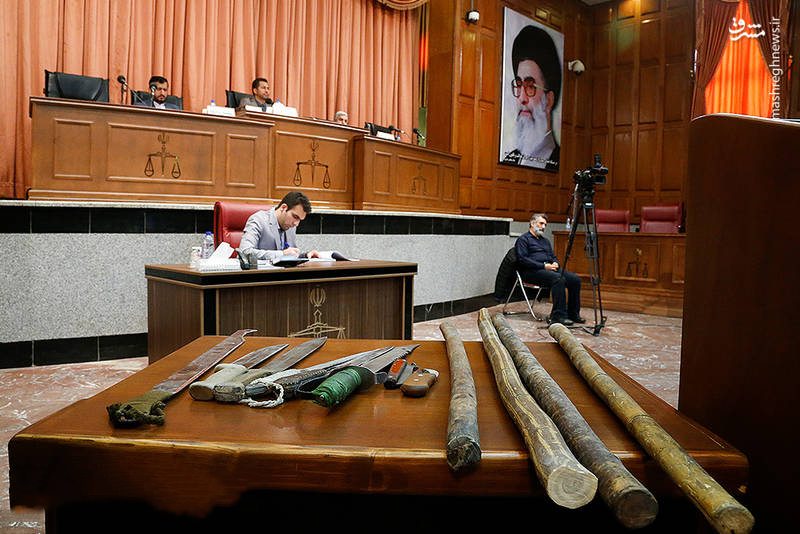
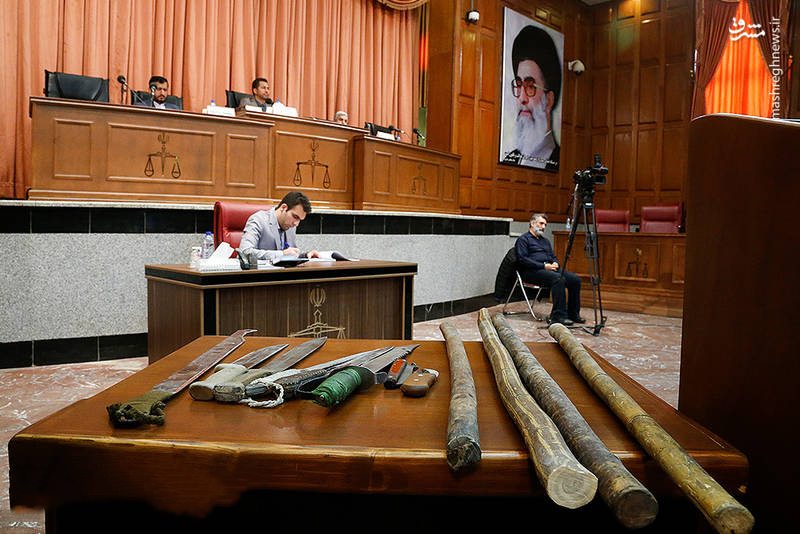
 Shabtabnews In this dark night, I have lost my way – Arise from a corner, oh you the star of guidance.
Shabtabnews In this dark night, I have lost my way – Arise from a corner, oh you the star of guidance.
